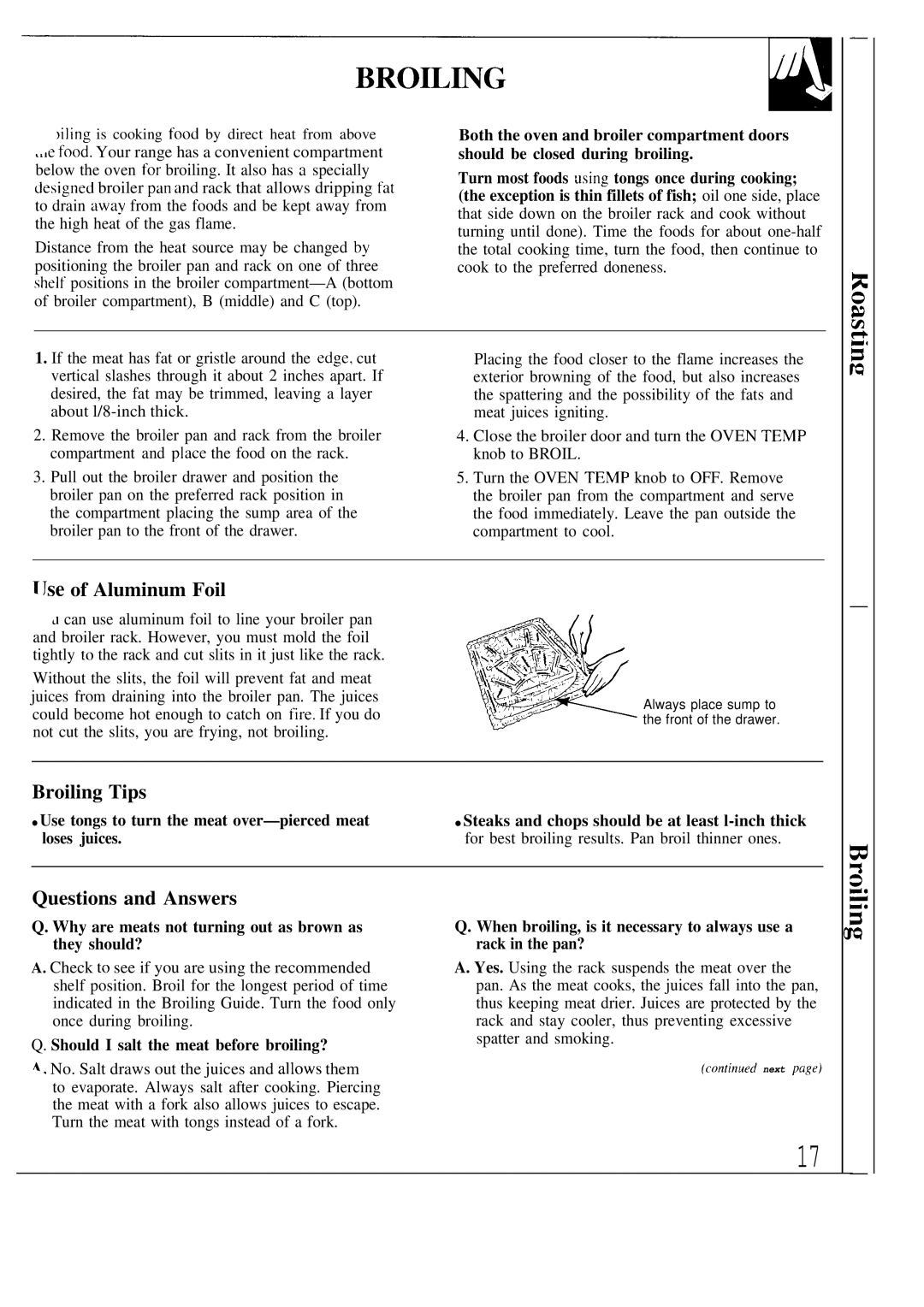
BROIL~G
)iling is cooking food by direct heat from above
.,,e food. Your range has a convenient compartment below the oven for broiling. It also has a specially desi&ned broiler pan and rack that allows dripping fat to drain away from the foods and be kept away from the high heat of the gas flame.
Distance from the heat source may be changed by positioning the broiler pan and rack on one of three shelf positions in the broiler
Both the oven and broiler compartment doors should be closed during broiling.
Turn most foods using tongs once during cooking; (the exception is thin fillets of fish; oil one side, place that side down on the broiler rack and cook without turning until done). Time the foods for about
1.If the meat has fat or gristle around the edge, cut vertical slashes through it about 2 inches apart. If desired, the fat may be trimmed, leaving a layer about
2.Remove the broiler pan and rack from the broiler compartment and place the food on the rack.
3.Pull out the broiler drawer and position the broiler pan on the preferred rack position in the compartment placing the sump area of the broiler pan to the front of the drawer.
Placing the food closer to the flame increases the exterior browning of the food, but also increases the spattering and the possibility of the fats and meat juices igniting.
4.Close the broiler door and turn the OVEN TEMP knob to BROIL.
5.Turn the OVEN TEMP knob to OFF. Remove the broiler pan from the compartment and serve the food immediately. Leave the pan outside the compartment to cool.
TJse of Aluminum Foil
~can use aluminum foil to line your broiler pan and broiler rack. However, you must mold the foil tightly to the rack and cut slits in it just like the rack.
Without the slits, the foil will prevent fat and meat juices from draining into the broiler pan. The juices could become hot enough to catch on fire. If you do not cut the slits, you are frying, not broiling.
,,c>,<~:t:’
~s$>~q~f.~:., |
| |
Y |
| |
\ |
| |
7\~<~+~>,ti:.~L: |
| |
,, +,&:< | Always place sump to | |
\& | ,,. | |
1., | the front of the drawer. | |
‘,, $ “ |
| |
a |
| |
Broiling Tips
● Use tongs to turn the meat | ● Steaks and chops should be at least |
loses juices. | for best broiling results. Pan broil thinner ones. |
|
|
Questions and Answers
Q. Why are meats not turning out as brown as they should?
A. Check to see if you are using the recommended shelf position. Broil for the longest period of time indicated in the Broiling Guide. Turn the food only once during broiling.
Q. Should I salt the meat before broiling?
A. No. Salt draws out the juices and allows them to evaporate. Always salt after cooking. Piercing the meat with a fork also allows juices to escape. Turn the meat with tongs instead of a fork.
Q. When broiling, is it necessary to always use a rack in the pan?
A. Yes. Using the rack suspends the meat over the pan. As the meat cooks, the juices fall into the pan, thus keeping meat drier. Juices are protected by the rack and stay cooler, thus preventing excessive spatter and smoking.
(c[~ntinued next page)
17
